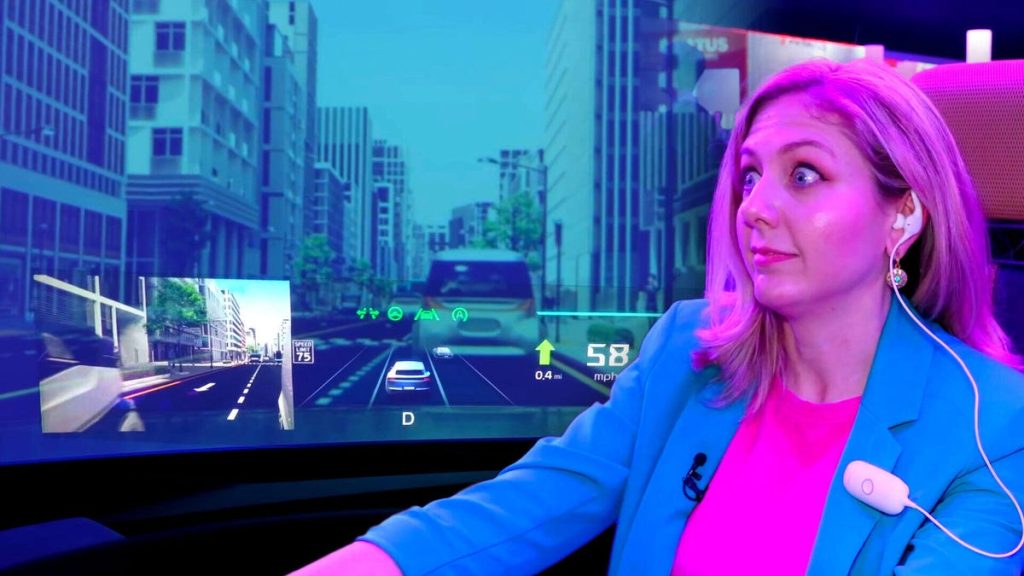Hyundai Mobis is pioneering a groundbreaking holographic windshield display technology that promises to revolutionize the in-car experience by addressing the persistent problem of driver distraction caused by multiple screens. This innovative system, showcased at CES 2025, projects crucial driving information directly onto the windshield, creating a personalized heads-up display (HUD) visible only to the driver. Unlike conventional HUDs, this technology utilizes projectors and a specialized film on the windshield to create a floating image effect that disappears when the driver’s head shifts away from the designated viewing angle. This unique approach allows for a focused, unobtrusive display of information without obstructing the driver’s view of the road.
The holographic display provides essential driving data such as speed, speed limit, and navigation directions within the driver’s line of sight. It dynamically adapts to changing driving conditions, displaying blind-spot information from external cameras when the driver activates their turn signal. This provides a comprehensive view of surrounding vehicles and enhances safety during lane changes. The system also supports various infotainment features like music selection and weather updates, all accessible without requiring the driver to look away from the road. The seamless integration of these features aims to significantly reduce driver distraction and enhance the overall driving experience.
A key differentiator of this holographic HUD is its personalized nature. The passenger cannot see the driver’s display, fostering an individualized in-car experience. This privacy feature allows the driver to concentrate on the road while the passenger enjoys separate entertainment, such as watching movies or playing games on their personal devices, without interfering with the driver’s focus. The absence of traditional dashboard displays contributes to a cleaner, less cluttered interior, emphasizing the holographic windshield as the central information hub.
Beyond its core functionality, the holographic HUD integrates with Hyundai Mobis’ SOIS (stress-optimized in-car system) concept. This system monitors the driver’s physiological state through sensors that detect brainwave activity. If signs of stress or drowsiness are detected, the SOIS adjusts the in-cabin environment, including the display’s prompts, lighting, seat vibrations, temperature, and music, to mitigate these conditions. This proactive approach to driver well-being aims to promote safer and more comfortable driving by addressing potential risks before they escalate.
The holographic display technology also boasts impressive transparency. The special film applied to the windshield retains up to 95% transparency, ensuring that the driver’s view of the road remains unobstructed even when the display is active. This high level of transparency minimizes visual clutter and maintains a clear line of sight, crucial for safe driving. The combination of personalized information delivery, adaptive content, and high transparency positions this holographic HUD as a significant advancement in automotive display technology.
In summary, Hyundai Mobis’ holographic windshield display offers a compelling vision for the future of in-car interfaces. By seamlessly integrating essential driving information, personalized content, and driver-assistance features, this technology aims to create a safer and more engaging driving experience. The driver-centric design, coupled with the passenger’s independent entertainment zone, enhances individual comfort and reduces distractions for all occupants. The integration with the SOIS system further demonstrates a commitment to driver well-being, creating an adaptive environment that responds to the driver’s physiological state. This innovative approach to automotive display technology holds significant potential for reshaping the way we interact with our vehicles in the years to come.

